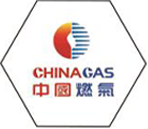
Nov . 16, 2024 07:26
Back to list
gas safety relief valve
Understanding Gas Safety Relief Valves Importance and Functionality
Gas safety relief valves are critical components in various industries, particularly in the gas and oil sector. These valves play a vital role in maintaining safety by regulating pressure within systems to prevent dangerous overpressure scenarios. In this article, we will explore the functionality, significance, and maintenance of gas safety relief valves.
What is a Gas Safety Relief Valve?
A gas safety relief valve is a specialized device designed to release excess pressure from a system to prevent catastrophic failures. When the pressure within a system exceeds predetermined limits, the relief valve automatically opens, allowing gas to escape safely. This process helps maintain optimal pressure levels, ensuring proper functioning and safety of the system.
Importance of Safety Relief Valves
The primary purpose of gas safety relief valves is to protect equipment, personnel, and the environment from the dangers associated with over-pressure conditions. By preventing pressure build-up, these valves reduce the risk of explosions, fires, and equipment damage.
1. Protection of Equipment Overpressure can lead to severe damage to pipelines, compressors, and other machinery. Safety relief valves act as a first line of defense, protecting valuable assets and minimizing operational downtimes.
2. Safety for Personnel High-pressure scenarios can pose significant risks to workers in gas facilities. Relief valves help mitigate these dangers by ensuring any pressure surges are managed quickly, thereby safeguarding employee health and safety.
3. Environmental Protection Gas leaks from over-pressure situations can lead to environmental contamination. Safety relief valves help prevent such incidents by controlling the release of gas in a safe and controlled manner.
How Gas Safety Relief Valves Work
gas safety relief valve

Gas safety relief valves operate on a straightforward principle. They are typically spring-loaded devices that open when the internal pressure exceeds a set limit. The valve features a sensing mechanism that continuously monitors pressure levels. Once the threshold is reached, the spring mechanism is overcome, allowing the valve to open and release excess gas.
The relief valve will remain open until the pressure falls back below the predetermined level, at which point it will close automatically. This automatic operation ensures quick responses to pressure changes, providing ongoing protection without requiring manual intervention.
Maintenance of Safety Relief Valves
Regular maintenance of gas safety relief valves is essential to ensure they operate effectively. Here are some key maintenance tips
1. Regular Inspections Schedule frequent inspections to check for any signs of wear or damage. Components should be visually inspected to ensure integrity and functionality.
2. Testing Conduct periodic functional tests to verify the valve opens at the designated pressure. This testing should simulate pressure conditions to ensure reliability.
3. Cleaning Remove any debris or contaminants that may obstruct the valve’s operation. Keeping the valve clean is crucial for ensuring it functions correctly.
4. Documentation Maintain records of inspections, tests, and maintenance activities. Documentation helps in tracking performance and scheduling future maintenance.
Conclusion
In conclusion, gas safety relief valves are a fundamental aspect of operational safety in gas and oil industries. Their ability to manage pressure effectively plays a crucial role in protecting equipment, ensuring personnel safety, and safeguarding the environment. Regular maintenance and inspections are vital for the continued efficiency and reliability of these important devices. By understanding their importance and functionality, industries can better prepare for and mitigate the risks associated with gas pressure management.
Next:
Latest news
-
Safety Valve Spring-Loaded Design Overpressure ProtectionNewsJul.25,2025
-
Precision Voltage Regulator AC5 Accuracy Grade PerformanceNewsJul.25,2025
-
Natural Gas Pressure Regulating Skid Industrial Pipeline ApplicationsNewsJul.25,2025
-
Natural Gas Filter Stainless Steel Mesh Element DesignNewsJul.25,2025
-
Gas Pressure Regulator Valve Direct-Acting Spring-Loaded DesignNewsJul.25,2025
-
Decompression Equipment Multi-Stage Heat Exchange System DesignNewsJul.25,2025

